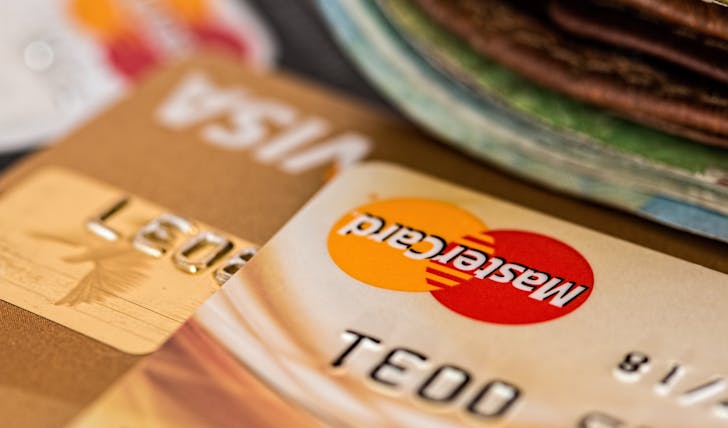
A New State Law in New York Aims At Making Credit Card Surcharge More Transparent

A new law has taken effect in New York, bringing with it a promise of transparency and fairness in the world of shopping and transactions. Gone are the days of the dreaded checkout surprise, where your total suddenly spikes due to hidden credit card fees.
Thanks to Governor Kathy Hochul’s latest legislative move, New Yorkers can now shop with a clearer understanding of what they are truly paying for.

Norma / Pexels / Governor Kathy Hochul signed the law that mandates businesses to display credit card surcharges clearly.
On Sunday, February 11, 2024, New York State ushered in a new era where credit card surcharges are no longer the sneaky add-ons they once were. With the stroke of a pen last December, Governor Hochul set the stage for a transformative change in the retail and service sectors.
This law, rooted in the principle of transparency, mandates that any additional charges for using a credit card must be explicitly stated and limited to the actual cost incurred by the business.
The Law Ensures No More Hidden Fees
The essence of this law is simple yet revolutionary: keep the consumers informed. Businesses across the state are now adapting to a new standard, where the price displayed is the price you pay, regardless of your payment method.

Pixabay / Pexels / Whether you are enjoying a cup of coffee at a local cafe or picking up souvenirs in a bustling tourist spot, the fear of unexpected costs at the payment terminal is now a thing of the past.
For the average shopper, this means a new shopping experience. Businesses have several options to comply with the law: They can display both the cash price and the credit card price, advertise a cash discount while listing the higher credit card price, or opt to charge the same price for both cash and credit transactions. What they can not do, however, is spring a surprise surcharge on you at the last minute.
Signs warning of a universal credit card fee, separate line items for convenience or service fees, and the elusive cash discount that vanishes at the credit card reader are all practices of yesteryear.
Empowering Consumers
Governor Hochul’s statement captures the spirit of the law: a step towards building trust between businesses and consumers. In a world where fine print and asterisks have become all too common, this move is a breath of fresh air. Shoppers can now budget with confidence, knowing exactly how much they need to pay, without the anxiety of unforeseen charges.

Energy / Pexels / According to early reports, the new state law aims at developing a trustable relationship between businesses and consumers.
However, it is important to note that this law has its boundaries. For instance, it does not apply to debit card transactions, a detail that underscores the law’s focus on credit card surcharges specifically. This nuance ensures that the legislation directly targets the additional costs associated with credit card processing fees, rather than the broader spectrum of electronic payments.
Business Adaptation
For businesses, the transition involves updating pricing strategies and display methods. While it may require some adjustment, the overarching sentiment is one of positive change. By fostering an environment of honesty and clarity, businesses are not just complying with a legal requirement. They are also investing in customer satisfaction and loyalty.
So, as New Yorkers navigate this new shopping landscape, the question arises: Will other states follow suit? With the spotlight on transparency and consumer rights, New York’s approach to credit card surcharges could very well set a precedent for nationwide change.
More in Law Degree
-
What Is Asylum & How Does It Work?
At its core, asylum is a protection granted to foreign nationals in a country because they have suffered persecution or have...
November 26, 2023 -
6 Reasons Why Sentencing Is Any Judge’s Toughest Assignment
When you picture a judge, you might imagine a stern figure in black robes, gavel in hand, delivering verdicts with unwavering...
November 14, 2023 -
Carrie Underwood Sued for NBC Sunday Night Football’s “Game On”
It is almost ritualistic. As the weekend winds down and Sunday evening approaches, millions across America gear up for a night...
November 12, 2023 -
Why Lawyers’ Productivity Has Increased in Modern Times
Remember the old days when your image of a lawyer might have been drawn straight out of an episode of “Matlock”...
November 5, 2023 -
Paying Down Debts Using Debt Relief Tactics
Debt is like that lingering headache that never seems to go away, no matter how much aspirin you pop. But there...
October 29, 2023 -
Pro Se: Your Right to Represent Yourself WITHOUT an Attorney
The legal system is complex and so, more often than not, people hire a professional attorney to navigate the legal system....
October 21, 2023 -
The Craziest, Most Expensive Hollywood Divorces of All Time
Hollywood is the land of glitz, glamour, and romance – until it is not. Over the years, we have seen our...
October 13, 2023 -
How Was Life as a Lawyer in Ancient Rome?
The Late Roman Republic was a period chock-full of political drama, rampant corruption, and the rise and fall of powerful figures....
October 8, 2023 -
7 Critical Things to Know Before Hiring an Elder Law Attorney
Hiring an attorney can feel like a daunting task. When the need pertains to elder law, emotions run high, often making...
October 1, 2023














